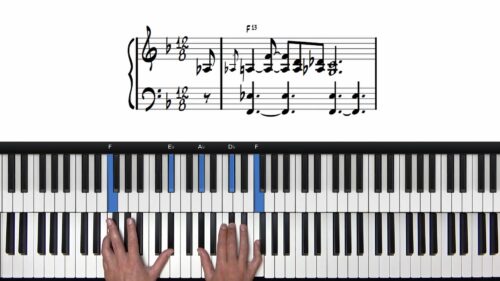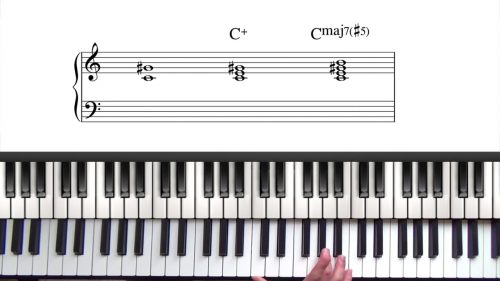Descending Fourths Fill
In this lesson we dive into a new fill technique using descending 4th intervals. This fill is an alternative to the suspended triad fill that we explored in the previous lesson.
Alternate the suspended triad fill and the descending 4ths fill throughout the blues form to add more variety and interest to our right hand.
Keep The Root Constant On Top
There are 2 variations of the descending 4ths fill. The 1st variation contains the chord tones 3, 13 and root in the right hand, with our pinky finger playing the root. The bottom 2 notes then move chromatically downwards to create an element of tension and release.
An important aspect of this variation is that the root remains constant on top of the right hand structure. The descending voices can be embellished with grace notes as demonstrated in the lesson.
3 Chromatically Descending Voices
The 2nd variation uses the same chord tones in the right hand but this time voiced with the root on the bottom. For this variation, all 3 notes of the right hand structure descend chromatically. The fill starts on the chord tones root, 3, and 13, and finishes on the chord tones b7, 9, and 5.
Again grace notes can be added at different stages of the fill to create a ‘cruncy’ blues character and additional dissonance. We practice these fills in different registers so that we are comfortable with the movement across the keyboard.
Practice Tips
-
Grace Notes: Add grace notes to the fill to create a greater sense of tension and release.
-
Use Different Registers: Practice the fill in different registers of the keyboard. This helps to clearly visualise the fill in all octaves of the piano.
-
Combine Hands: Integrate the fill with left-hand bass lines and chords. Practice different left hand structures such as octaves, shells, and 10th intervals.
-
Repetition: Cycle around the blues form until these melodic fills are comfortable. Repetition is key to making this technique second nature, then allowing you to focus on expression and dynamics.






